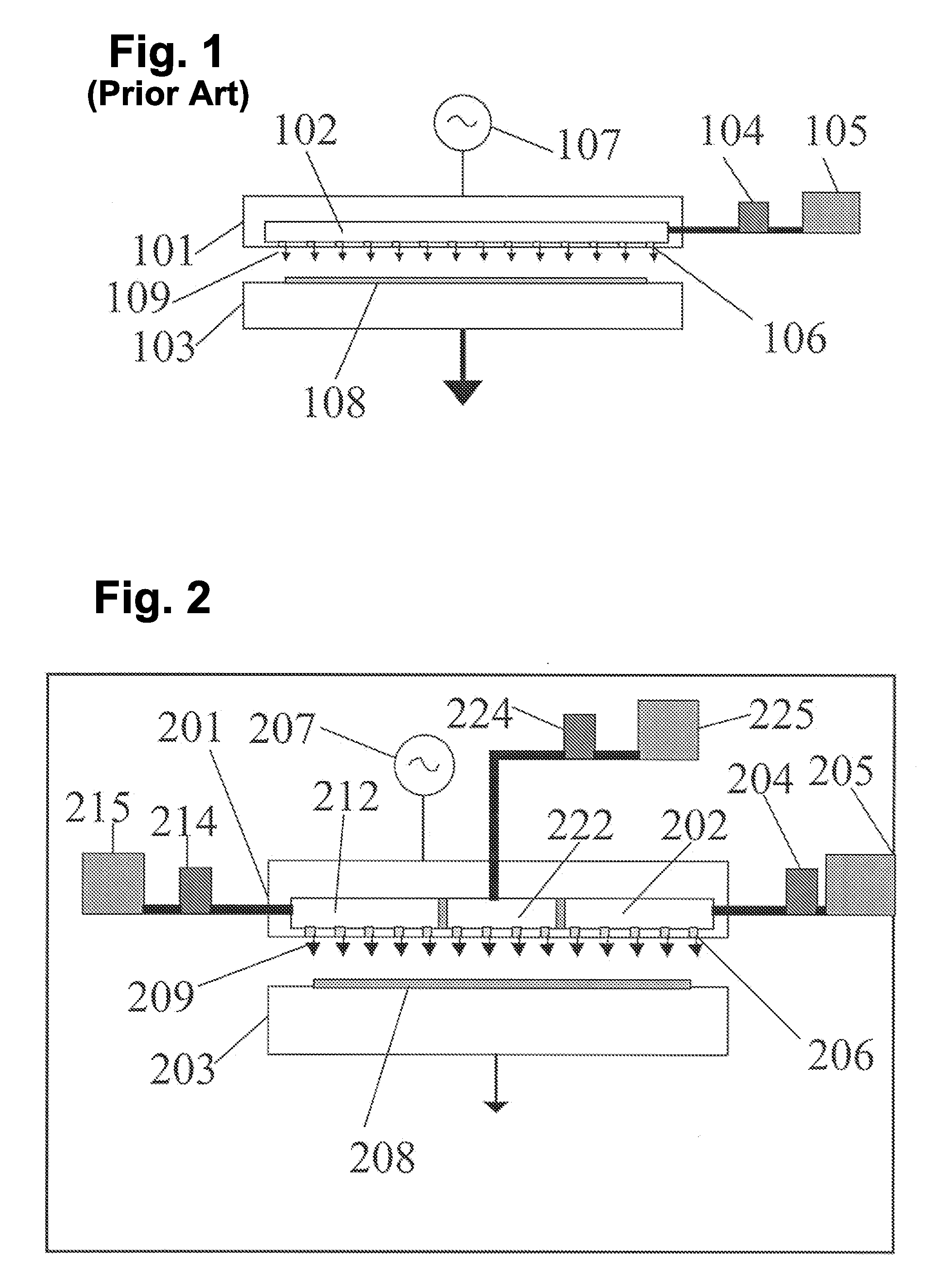Etching Apparatus and Process with Thickness and Uniformity Control
a technology of uniformity control and etching apparatus, applied in microstructural technology, microstructured devices, electric discharge tubes, etc., can solve the problems of inefficiency and slow lapping and polishing process, unsuitable for removing silicon in a controlled non-uniform manner, and inability to achieve uniform etching uniformity, reduce the non-uniformity of remaining film, and reduce the overall wafer or film thickness. uniformity
- Summary
- Abstract
- Description
- Claims
- Application Information
AI Technical Summary
Benefits of technology
Problems solved by technology
Method used
Image
Examples
Embodiment Construction
[0036] Etching of or thin film deposition on a substrate with a desired non-uniform rate or film properties are achieved in this invention by providing independent control of gas mixtures and / or gas flow rates to different parts of the processing plasma volume above the substrate.
[0037] In one embodiment this may be accomplished using a showerhead (See FIG. 2) with a segmented gas reservoir. This figure illustrates a section view of a parallel plate embodiment of the reactor where the top, electrode is powered and where the wafer to be etched or deposited upon is placed on the bottom electrode. The radio frequency powered upper electrode 201, the cathode, is also used as a showerhead for the introduction of gases into the plasma discharge. Within said electrode are gas reservoirs 202, 212, 222 for distribution of the gas to the holes in certain areas of the structure. The lower electrode 203 is grounded electrically and serves therefore as the anode of the discharge. The gas supply...
PUM
| Property | Measurement | Unit |
|---|---|---|
| Fraction | aaaaa | aaaaa |
| Fraction | aaaaa | aaaaa |
| Thickness | aaaaa | aaaaa |
Abstract
Description
Claims
Application Information
 Login to View More
Login to View More - R&D
- Intellectual Property
- Life Sciences
- Materials
- Tech Scout
- Unparalleled Data Quality
- Higher Quality Content
- 60% Fewer Hallucinations
Browse by: Latest US Patents, China's latest patents, Technical Efficacy Thesaurus, Application Domain, Technology Topic, Popular Technical Reports.
© 2025 PatSnap. All rights reserved.Legal|Privacy policy|Modern Slavery Act Transparency Statement|Sitemap|About US| Contact US: help@patsnap.com



